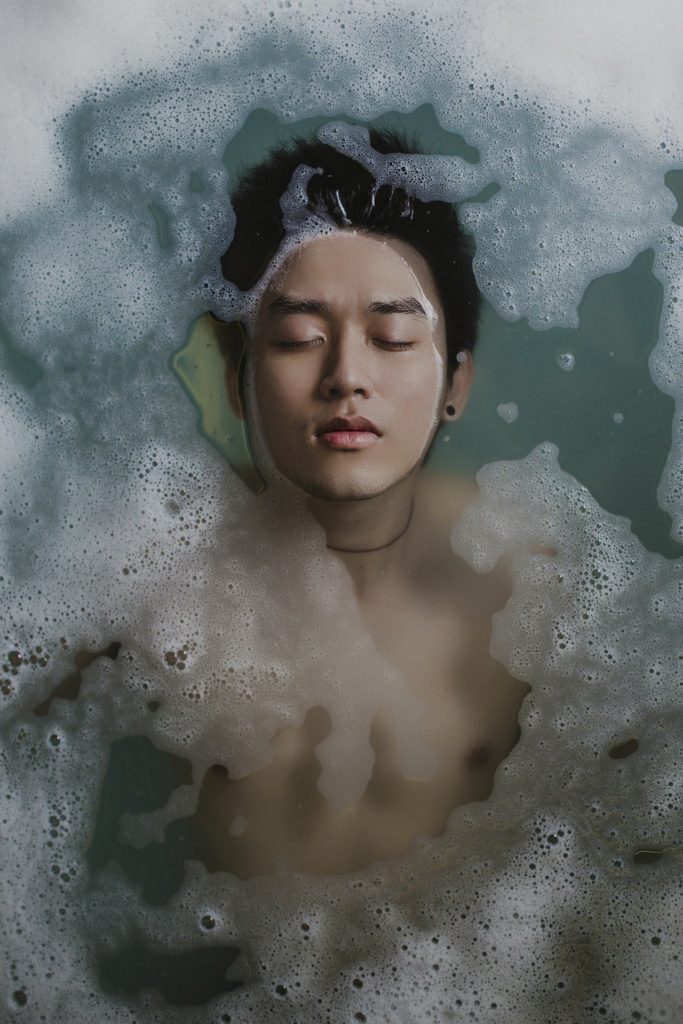Imagine yourself sinking into a toasty, fragrant tub.
(The heat of summer may make this image a little less than appetizing, but if that’s the case, just imagine it’s really cold and then imagine sinking into that tub. All better?)
Now, how does the warm water make you feel?

For me, water has a sacredness to it. It’s able to endlessly transform and flow. It’s malleable. But it can also shape canyons and literally move mountains. Its very malleability creates possibility and gives it its awe-inspiring power.
Being that the human body is nearly 70% water, it’s no surprise that many of us are drawn to it or that we find our greatest rest within it.
Since ancient times, we have connected with water. The Ganges River was believed to release the soul of negative karma. The Nile River was seen as a divine source and place of prayer. The Incas believed the sun had sanctified Lake Titicaca.
Unsurprisingly, therefore, we have been using water and minerals as therapy for centuries. The practice is known as Balneotherapy.
The practice may have begun with the Greeks and Romans luxuriously soaking in hot springs, but it has been practiced far and wide. The cultures of France, Italy, Spain, Portugal, Germany, Austria, Switzerland, Turkey, Poland, Czech Republic, Hungary, Israel, and Japan (among others) each had their own version.
In each of these cultures, bathing was used to cultivate a sacred space for physical, mental, emotional and spiritual healing. In our modern world, however, many of us have lost touch with this practice.
Beyond the psychosomatic benefits, the practice of balneotherapy has a powerful effect on our nervous system and, more broadly, our inflammation levels. Being immersed in water increases our blood flow, improving circulation and helping to move lymph along in our bodies.
Research has found that balneotherapy treatments of 38-42 degrees Celcius decrease our C-Reactive protein (CRP levels) — which are inclined to increase due to inflammation. This allows for a soothing our hypothalamic-pituitary-adrenal (HPA) axis (that triggers our fight-freeze or flight state).
What that all means is that the therapy allows our body to find a state of rest and ease, thus enabling our internal systems to function naturally and optimally, without constriction or resistance.
Oh, and bathing is a perfect mindfulness opportunity too!
I get that, for some people, sitting in a tub of hot water is not the easiest thing to do after a long day. The temptation to grab your phone and catch up on emails, or scroll through social media is real.
Yet, the practice of unplugging and allowing a bath to be a ritualistic, full sensory experience is so very powerful.
Because I want you to experience bathing in this way, I’ve created a free practice that you can listen to while in the bath this week.
Draw the lights very dim, perhaps light some candles, and let your partner or kids know that you’ll be MIA for 20 minutes (I promise, they can handle being without you!).
Draw your bath before you get into it and make sure that it’s not too hot (you don’t want to be sweating or uncomfortable).
Finally, I recommend adding in your favorite bath soak or salts. A few of my favorites are natureofthings’ Fortifying Magnesium Soak, African Botanic’s Le Vert Tranquil , and Pursoma’s Moonlit Ritual. If I am fresh out of these, or just want to take a more home-eopathic route, I add a few cups of Ancient Minerals’ Magnesium and some lavender or rose oil to my bath and call it a day.
My favorite way to wrap it up, is by practicing Abhyanga, or self massage, slathering oil over my skin. ultimate favorite being Taza’s Eladi, allowing the oil to sink into my skin for a few minutes before dressing, or getting into bed. I will warn you, if you take a bath right before bed, you are risking having deep and luxurious night of sleep, so consider yourself warned!
I hope that you will gift yourself the luxury of balneotherapy this week. You’re worth it.
